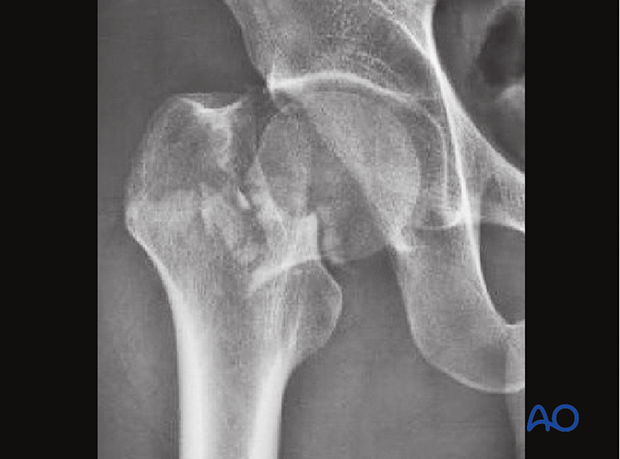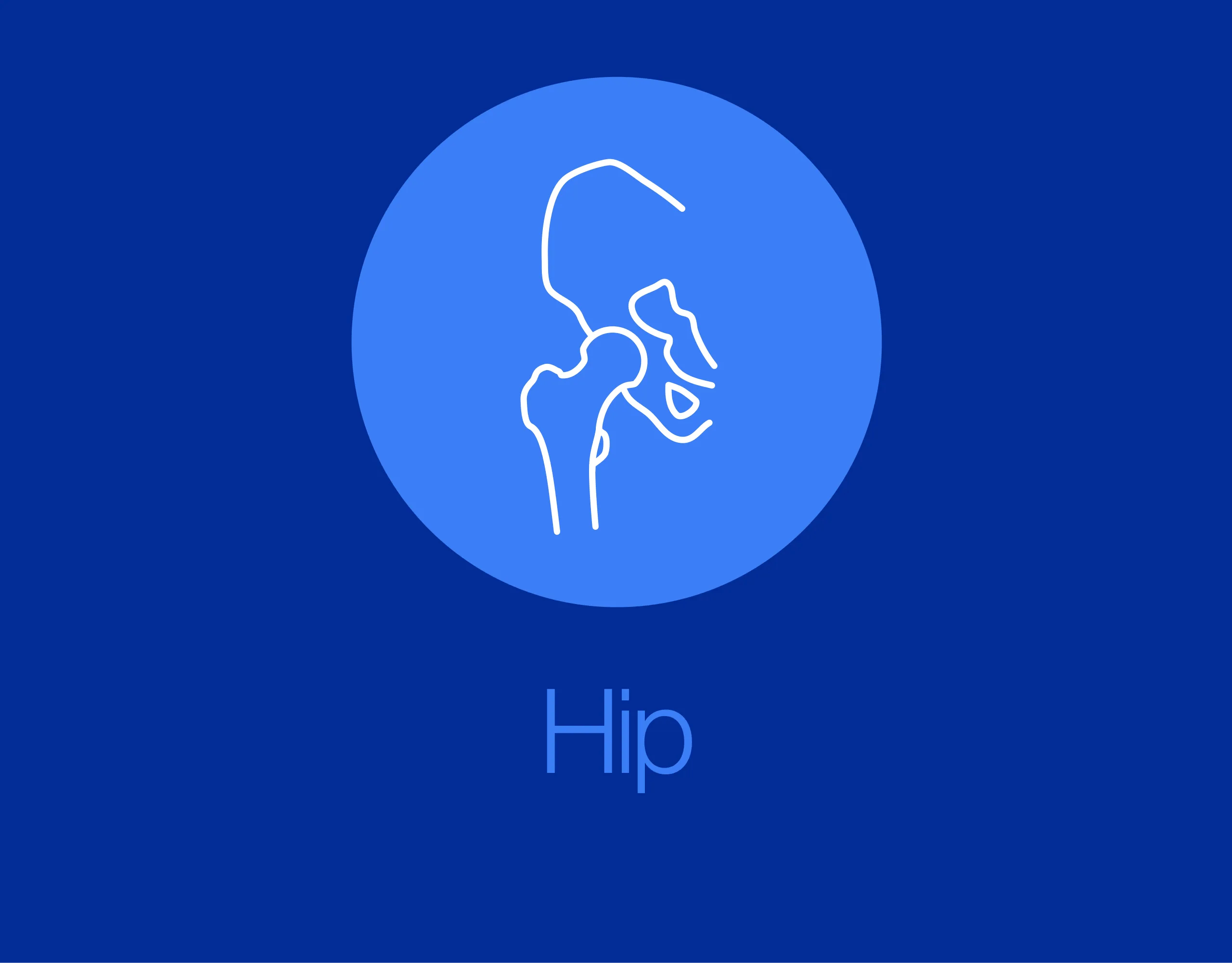Transcervical femoral neck fractures (simple or multifragmentary)
Definition
Simple and multifragmentary transcervical femoral neck fractures are classified by AO/OTA as 31B2.1 and 31B2.2, respectively.
The fracture line lies in between the subcapital and intertrochanteric lines.
The head is usually displaced in varus angulation and shortening.
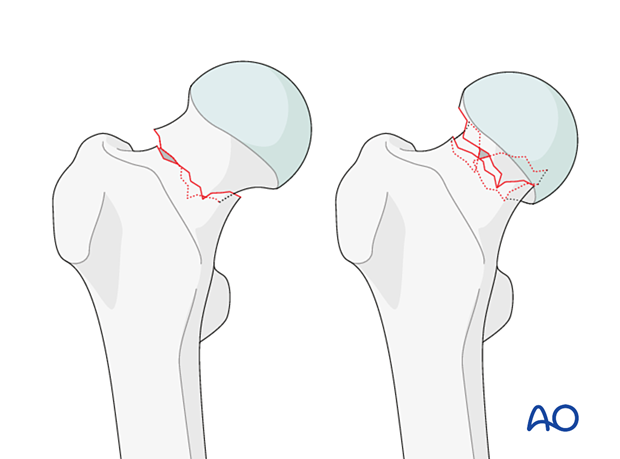
The Pauwels classification can best be determined intraoperatively, once traction is applied and the fracture is reduced. On an AP fluoroscopic view, assess the inclination of the fracture line. Pauwels type I is a fracture with <30º from the horizontal. Type II is 30º–50º from the horizontal. Type III is >50º from the horizontal.
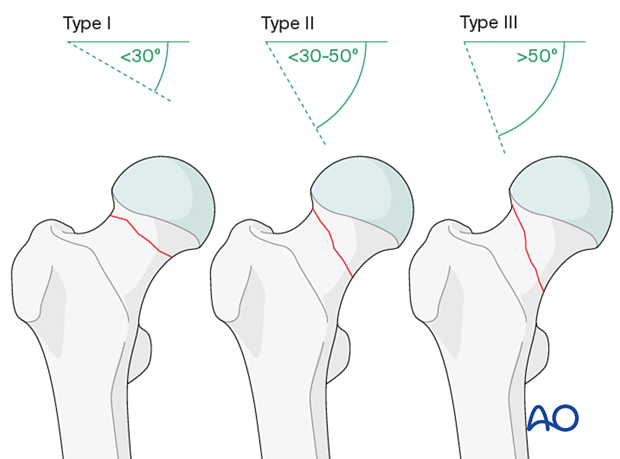
Further characteristics
These are extraarticular but intracapsular fractures.
The blood supply to the femoral head is threatened because the displacement may disrupt the blood vessels supplying the femoral head.
The more vertical the fracture line is after reduction, the more unstable it becomes because of the shearing forces acting on the fracture.
The blood supply of the femoral head
The vascular anatomy varies, but in 60% of patients, the medial and lateral femoral circumflex arteries originate from the profunda femoris artery (1).
Most of the blood supply of the femoral head comes from the medial femoral circumflex artery (2), which gives rise to three or four branches, the retinacular vessels (3). These run posteriorly and superiorly along the femoral neck in a synovial reflection until they reach the cartilaginous border of the head. The obturator artery gives rise to the vessels within the ligamentum teres (4). The medial and lateral circumflex arteries may anastomose, but the principal blood supply of the head originates from the medial circumflex artery and its branches, especially the ascending ones.
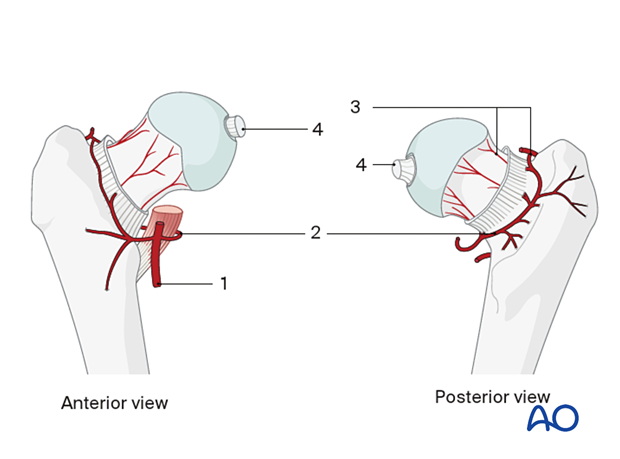
Imaging
In the AP view, there is a disruption of the medial and lateral cortical lines.
In the lateral view, there will be abnormal anteversion.
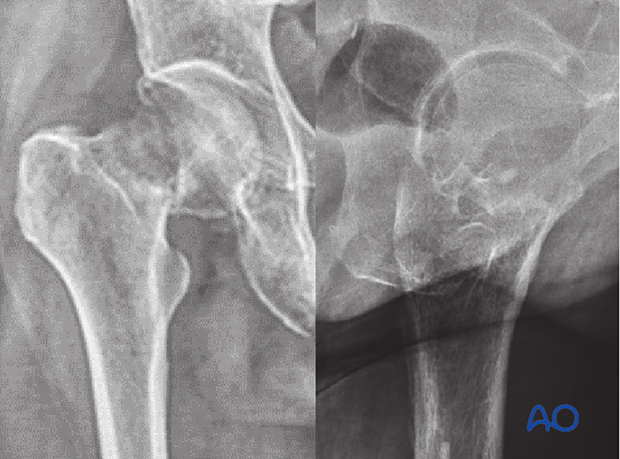
AP x-ray of a multifragmentary transcervical fracture
